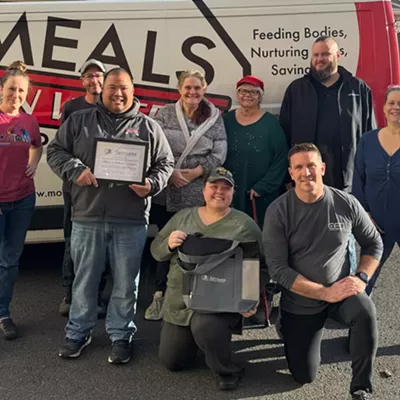Remember young George Bailey, in It’s a Wonderful Life, saving Mr. Gower, the druggist, from accidentally poisoning a young child? Today, it’s a different world. With health care transformation under way, thanks to new technology and electronic medical records, the pharmacy and pharmacist are changing as well.
At the Spokane offices of Medication Review Inc., CEO Doug Crafton presides over one of the most dramatic changes. Since 2009, Medication Review has been a leader in longdistance telepharmacy in the region. Plenty of rural hospitals are peppered throughout Eastern Washington, in Quincy, in Prosser, Sandpoint and Klickitat. State and federal law requires pharmacists to carefully dispense the more dangerous drugs often found in hospitals.
Yet for years, Crafton says, these laws were ignored by rural hospitals because they couldn’t afford to have professional pharmacists manning their internal pharmacies 24 hours a day.
“They weren’t reviewed by a pharmacist,” Crafton says. “The nurse would walk into the pharmacy, grab the med and give it to the patient.” The board mostly looked the other way.
Now, with Medication Review, there’s a simple solution. A doctor at a community hospital writes a prescription order, scans it into his computer and sends it to Medication Review, where the company’s pharmacists double-check it for safety. They examine the dosage, look at the patient’s medical history and the drug’s potential side-effects as well as its interaction with other drugs.
Once the medication is approved, a signal goes out to an automatic dispensing machine at the hospital. “They look like a big chest of drawers, with miniature cubicles inside each drawer,” Crafton says. A nurse can then retrieve the medication.
The next step in providing medication is to make sure the right patient gets the right drug in the right way — by pill or IV — at the right time. St. Luke’s Rehabilitation Institute, in Spokane, was one of the first rehab hospitals in the nation to implement a bar code-reading system to reduce medical errors.
“We attach a unique identifier to each medicine,” says St. Luke’s Pharmacy Manager Chris Greer. Each patient’s wristband also sports a unique bar code, and by scanning the med and the patient, “you can avoid people taking the wrong doses,” Greer says.
The hope is that all this technology will make taking your medicine safer. Software now flags dangerous drug interactions and offers alerts when it appears an improper dose has been prescribed; machines can fill prescriptions and place labels on bottles, even when the pharmacy is closed for the night. And smart caps can signal patients when it’s time for a dose.
So what’s left for the pharmacist? With technicians and technology taking over some of the tedious work of filling and delivering prescriptions, and integration of electronic medical records becoming standard, their role is shifting. More and more, pharmacists will be working closely with front-line care providers. After all, earning a pharmacy doctorate requires a rigorous and highly specialized postgraduate education. That’s a lot of expertise that could be put to use.
At Group Health Cooperative in Spokane, the shift is already under way.
“Group Health is an integrated care delivery model,” says Mike Norwood, associate director of Pharmacy Operations. “We actually have pharmacists that are members of the care team.”
A Group Health pharmacist might be assigned to two or three doctors, and interacts much more with the patients than the typical model, where a pharmacist answers any questions you might have when you pick up a prescription. In the Group Health system, pharmacists consult with patients as well as other members of the health care team in the same way a dietician or physical therapist might.
“So you come in one day for your annual checkup with your doctor. Your doctor ran your usual labs, and says, ‘Oh, your blood sugar’s up a little bit,’” Norwood says, “‘you’re in the early stages of diabetes.’ Then the doctor says, ‘Here’s my plan for you. We need to do some lifestyle changes. And we need to start you on a medication. And we’re going to have you meet with the pharmacist.’”
Ultimately, allowing pharmacists to take a more direct role in selecting medications, Norwood says, could not only relieve overburdened physicians, but also result in better drug choices, helping patients get healthier, faster.
“It’s kind of the concept of building a medical system where everyone is working at the top of their skills,” says Norwood.




















